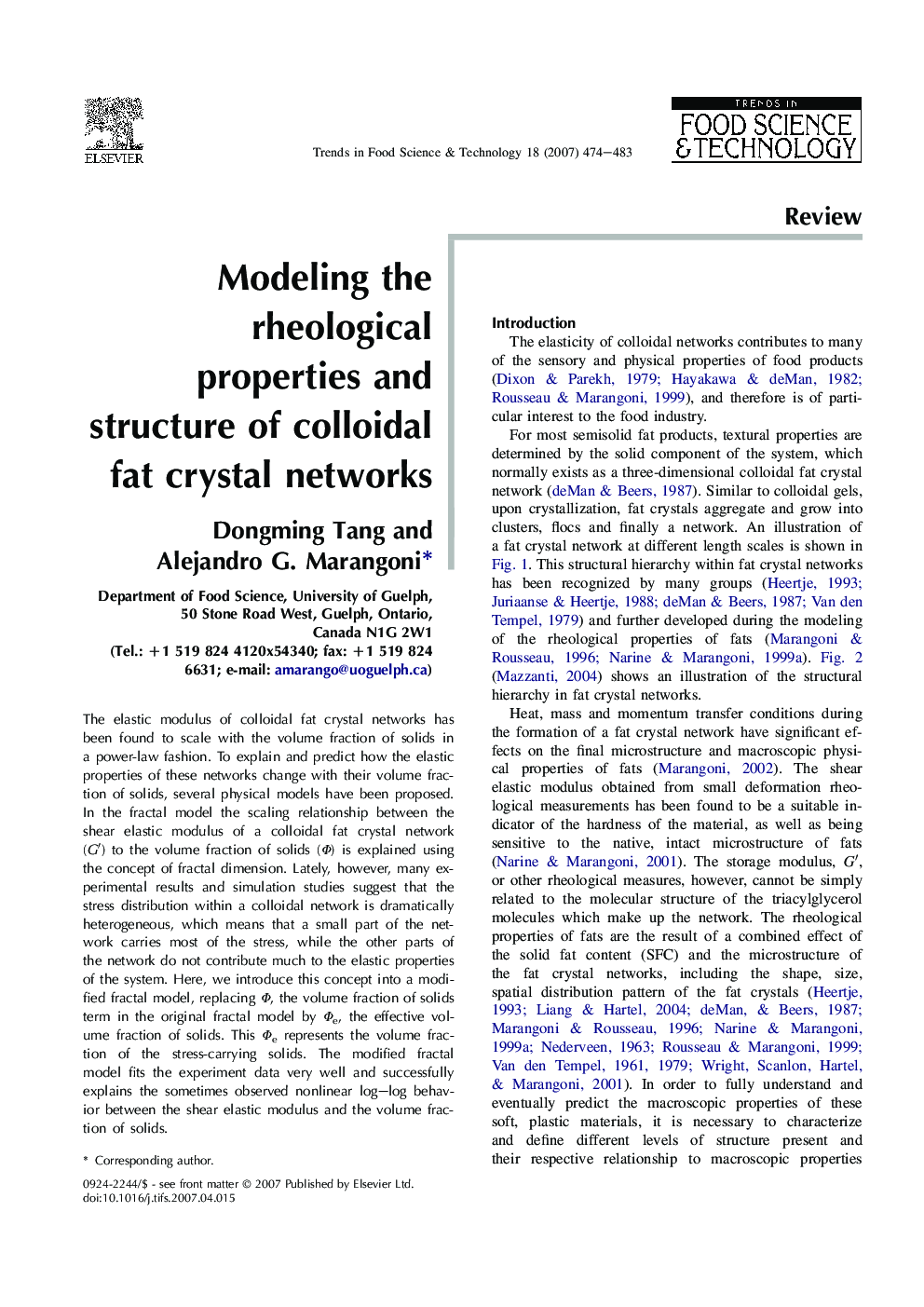| Article ID | Journal | Published Year | Pages | File Type |
|---|---|---|---|---|
| 2099510 | Trends in Food Science & Technology | 2007 | 10 Pages |
The elastic modulus of colloidal fat crystal networks has been found to scale with the volume fraction of solids in a power-law fashion. To explain and predict how the elastic properties of these networks change with their volume fraction of solids, several physical models have been proposed. In the fractal model the scaling relationship between the shear elastic modulus of a colloidal fat crystal network (G′) to the volume fraction of solids (Φ) is explained using the concept of fractal dimension. Lately, however, many experimental results and simulation studies suggest that the stress distribution within a colloidal network is dramatically heterogeneous, which means that a small part of the network carries most of the stress, while the other parts of the network do not contribute much to the elastic properties of the system. Here, we introduce this concept into a modified fractal model, replacing Φ, the volume fraction of solids term in the original fractal model by Φe, the effective volume fraction of solids. This Φe represents the volume fraction of the stress-carrying solids. The modified fractal model fits the experiment data very well and successfully explains the sometimes observed nonlinear log–log behavior between the shear elastic modulus and the volume fraction of solids.
